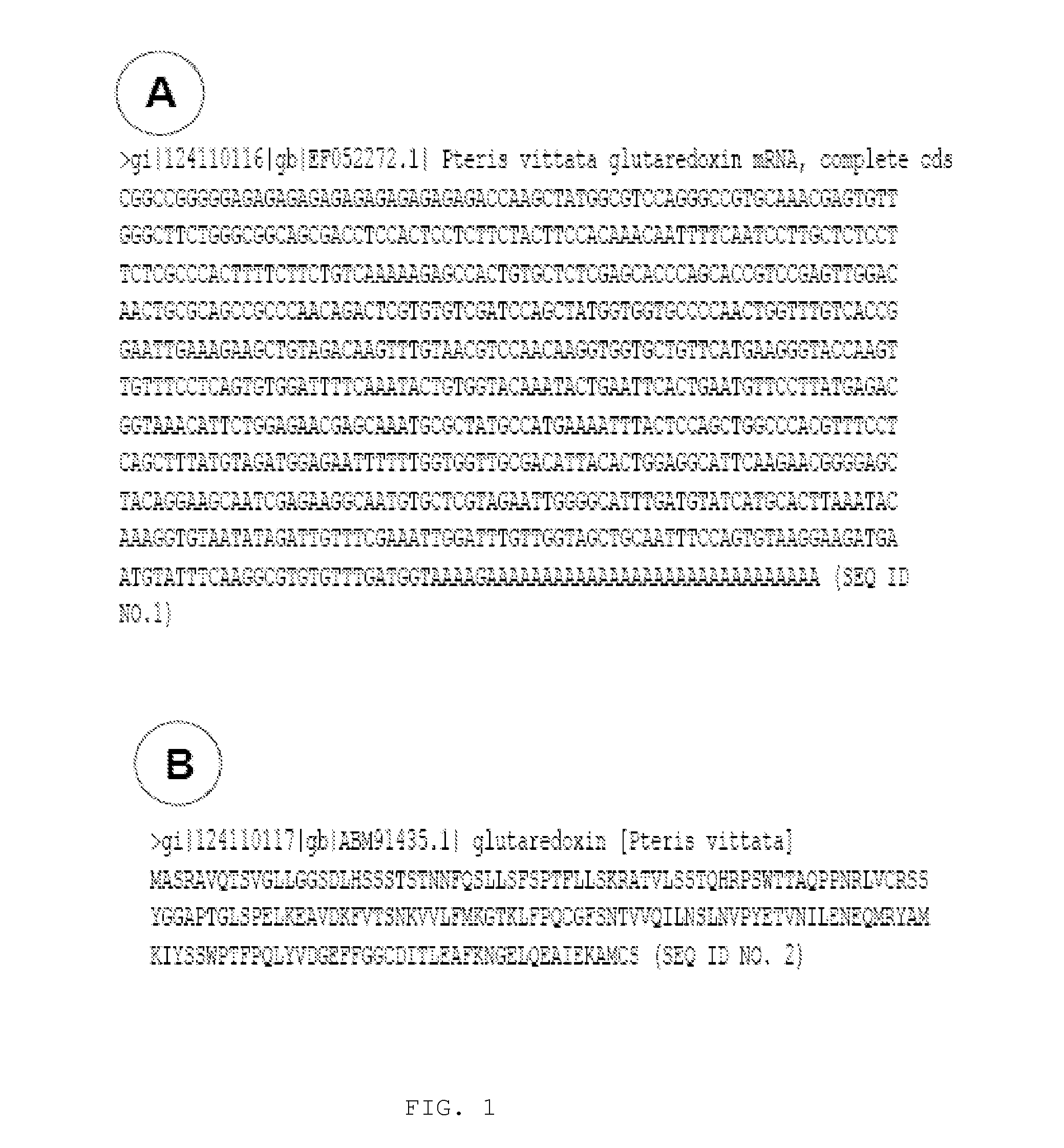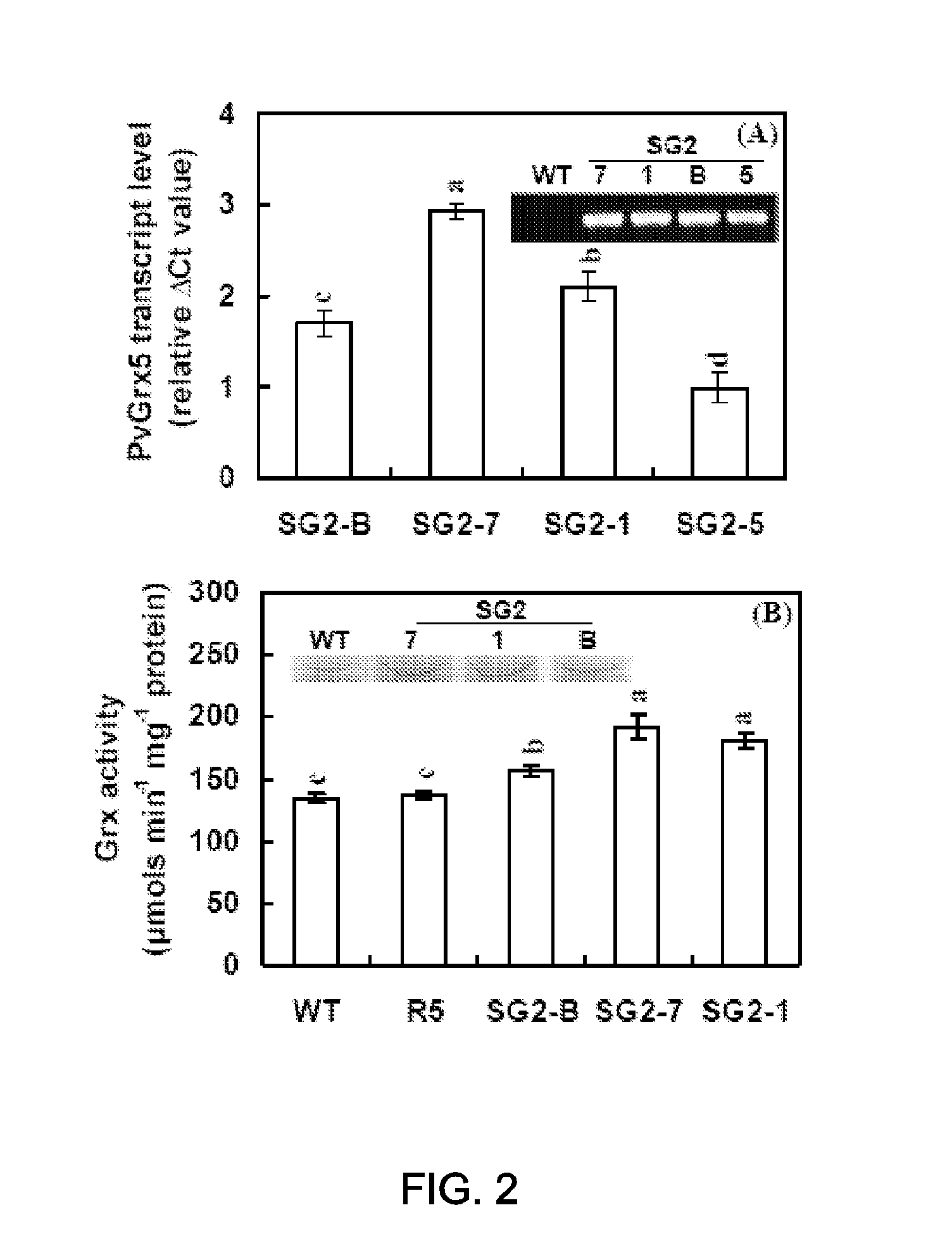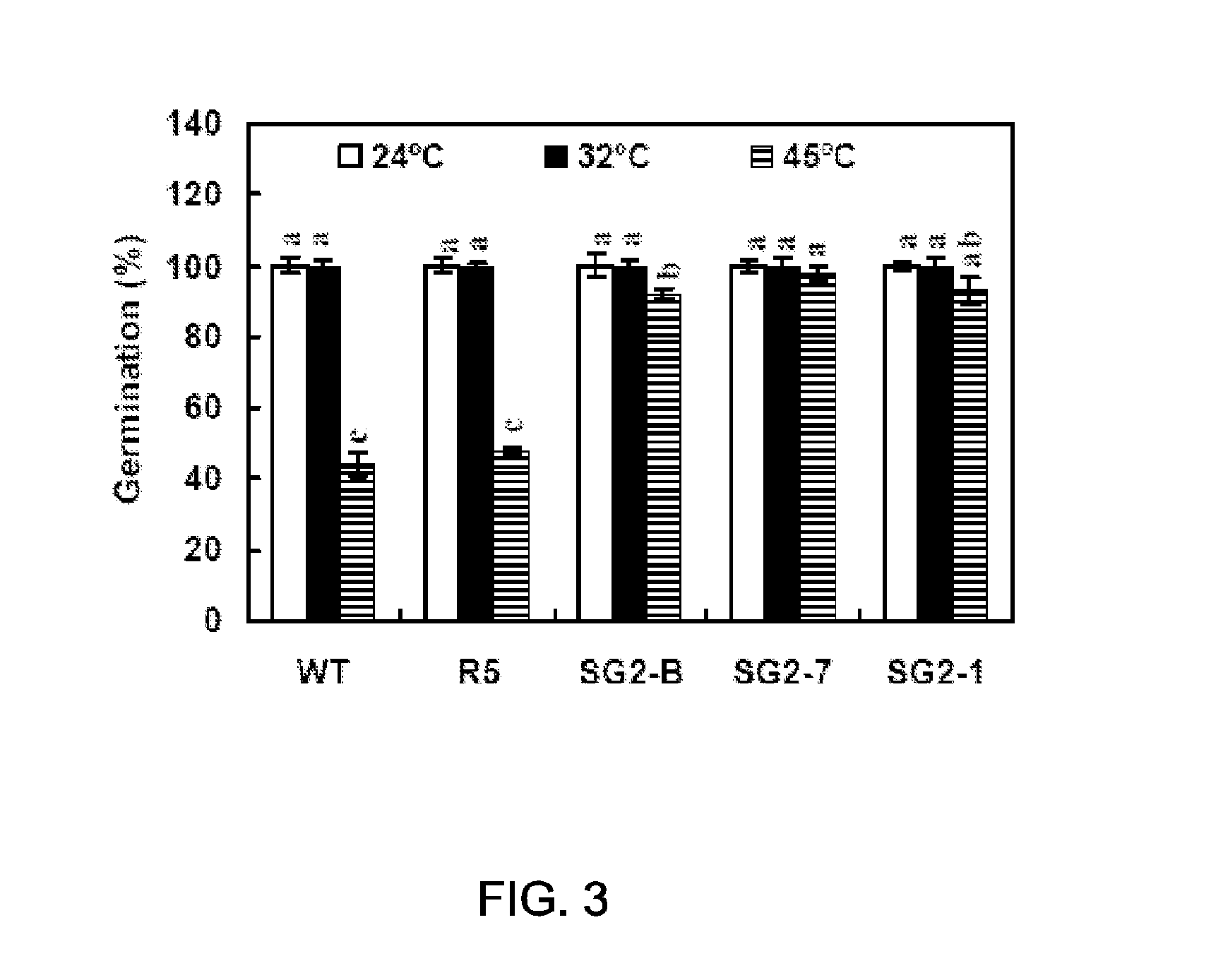Increased stress tolerance, yield, and quality via glutaredoxin overexpression
a glutaredoxin and stress tolerance technology, applied in the field of glutaredoxin overexpression, can solve the problems of little progress in breeding stress-tolerant cultivars, the enzyme protecting specific target proteins from oxidative damage has not been investigated for its possible role in stress toleran
- Summary
- Abstract
- Description
- Claims
- Application Information
AI Technical Summary
Benefits of technology
Problems solved by technology
Method used
Image
Examples
example 1
Plant Material
Construction of Expression Vector and Agrobacterium-mediated Transformation.
[0047]The construction of expression vector and Agrobacterium-mediated transformation were done as described previously (Sundaram et al., 2009). Briefly, the open reading frame (726 bp) of the Pv5-6 cDNA clone (Genbank accession number EF052272) was amplified and the PCR product, cloned in pCR 2.-1-TOPO vector. TOPO-PvGrx5 was digested with SacI and cloned in SacI-linearized plant expression vector pMON-R5 (Fouad and Rathinasabapathi, 2006) to derive pMON-R5-SG2. pMON-R5 vector allows constitutive expression of cDNAs under the control of a modified Fig Mosaic Virus promoter and contains a kanamycin resistance marker (Fouad and Rathinasabapathi, 2006). The pMON-R5-SG2 and pMON-R5 were transferred into Agrobacterium tumefaciens ABI strain via triparental mating (An et al., 1988). Plants were inoculated with A. tumefaciens strain (ABI) carrying pMON-R5-SG2 or pMON-R5 by the floral dip method (Clou...
example 2
Phenotypic Characterization for Heat Tolerance
[0048]To evaluate heat tolerance during germination, seed germination assay was performed according to Hong and Vierling (2000). Surface-sterilized seeds were treated at 24° C. and 45° C. for 60 min and plated on 0.5×MS medium containing 0.5% (w / v) sucrose, and kept at 4° C. for a minimum of 48 hours and then moved to 24° C. for three days. Germinated seeds were counted to calculate percent germination.
[0049]To evaluate whole plant tolerance to heat stress, plants were grown individually in 3-inch plastic containers, using a commercial propagation medium (Mix number 2, Fafard Inc., Agawam, Mass.) (a peat moss, perlite, and vermiculite mixture). The plants were grown under 16-h-light photoperiod of 150 μmol sec(^−1)m(^2) supplied by cool white fluorescent lights at 24° C. constant temperature. A heat tolerance assay was performed by incubating one month old seedlings continuously at 36° C. (without changing light intensity and maintaining...
example 3
[0051]To measure the ion leakage caused by high temperature stress, the leaves were removed from the plants, weighed, rinsed briefly with deionized water, and immediately immersed in a vial with 10-mL of deionized water. Samples were kept in an incubator shaker for 1 hour at 25° C., and ion leakage into the water was measured using a conductance bridge (Model 31A, YSI Inc., Yellow Springs, Ohio, USA). Samples were then autoclaved for 5 min, and then kept in the shaker for 1 hour at 25° C. and conductivity was measured again. With the two measurements, percent injury index was determined using the equation 1−[(1−T1 / T2)) / (1−C1 / C2)]×100%, wherein T1 and T2 represent conductivity values for heat-stressed plants before and after autoclaving, and wherein C1 and C2 represent conductivity values for control plants before and after autoclaving (Kocheva et al. 2004). Ion leakage measurements on leaves from heat-stressed plants showed that SG2 lines exhibited significantly (P<0...
PUM
| Property | Measurement | Unit |
|---|---|---|
| constant temperature | aaaaa | aaaaa |
| heat stress | aaaaa | aaaaa |
| pH | aaaaa | aaaaa |
Abstract
Description
Claims
Application Information
 Login to View More
Login to View More - R&D
- Intellectual Property
- Life Sciences
- Materials
- Tech Scout
- Unparalleled Data Quality
- Higher Quality Content
- 60% Fewer Hallucinations
Browse by: Latest US Patents, China's latest patents, Technical Efficacy Thesaurus, Application Domain, Technology Topic, Popular Technical Reports.
© 2025 PatSnap. All rights reserved.Legal|Privacy policy|Modern Slavery Act Transparency Statement|Sitemap|About US| Contact US: help@patsnap.com



